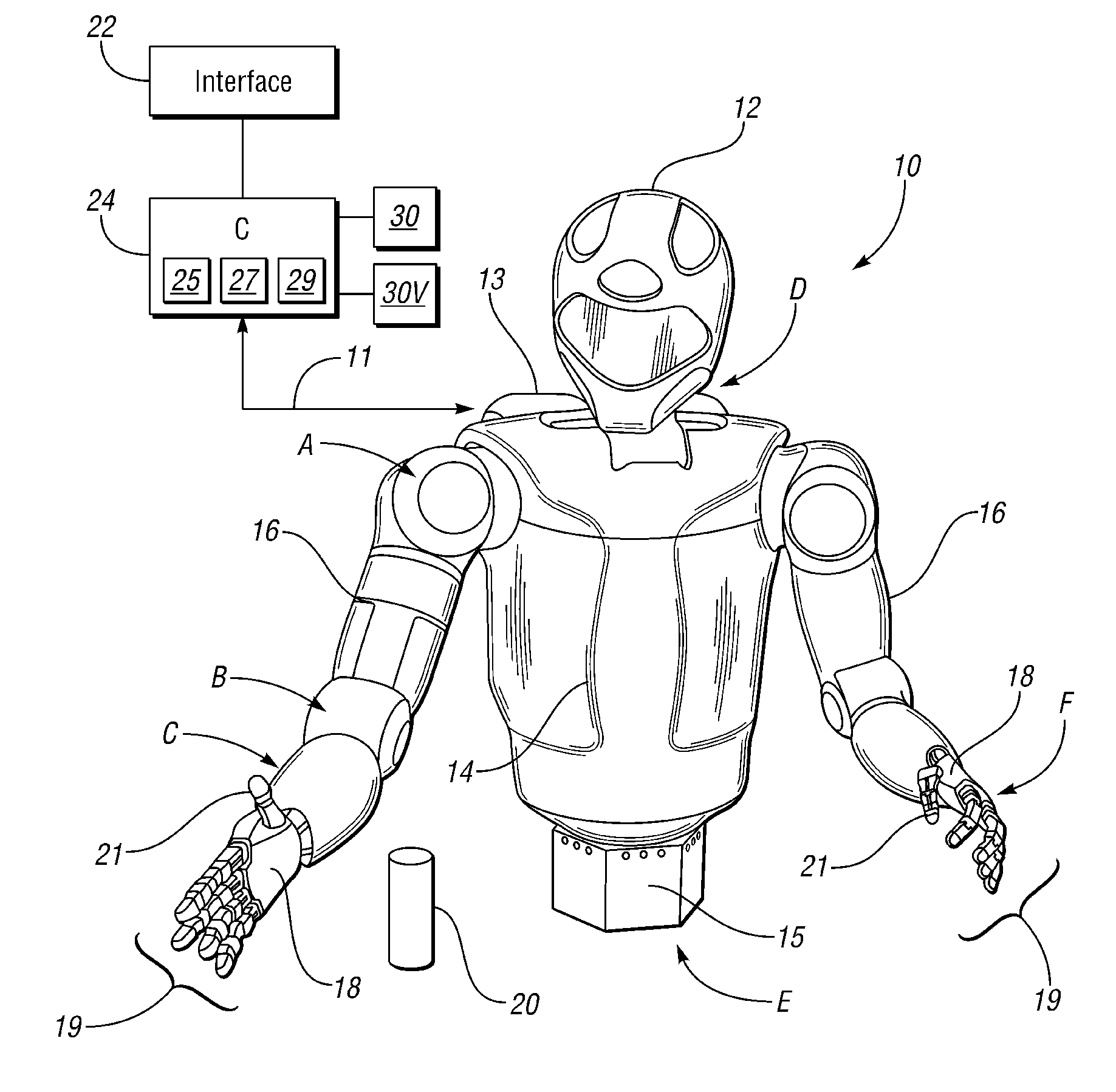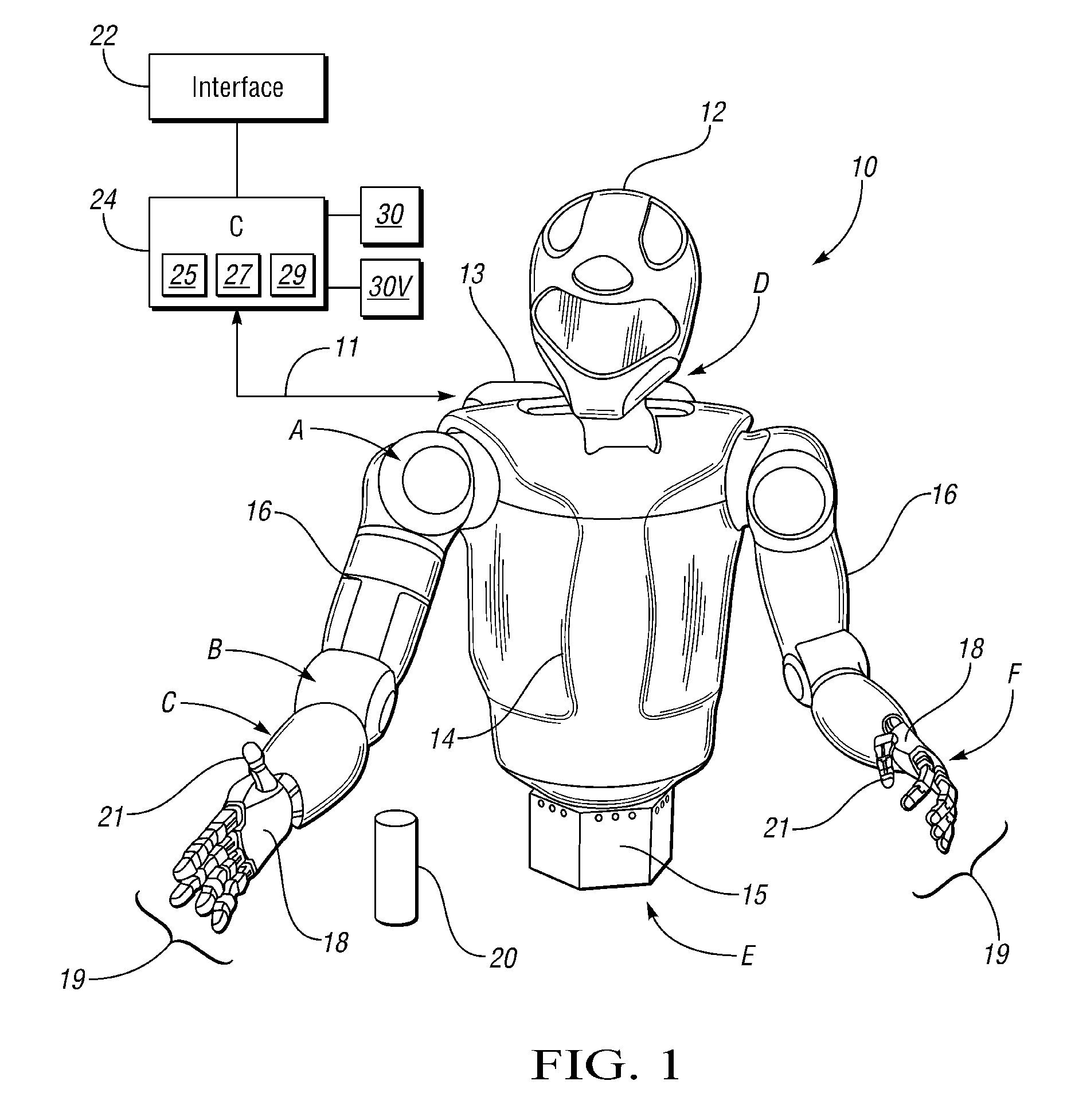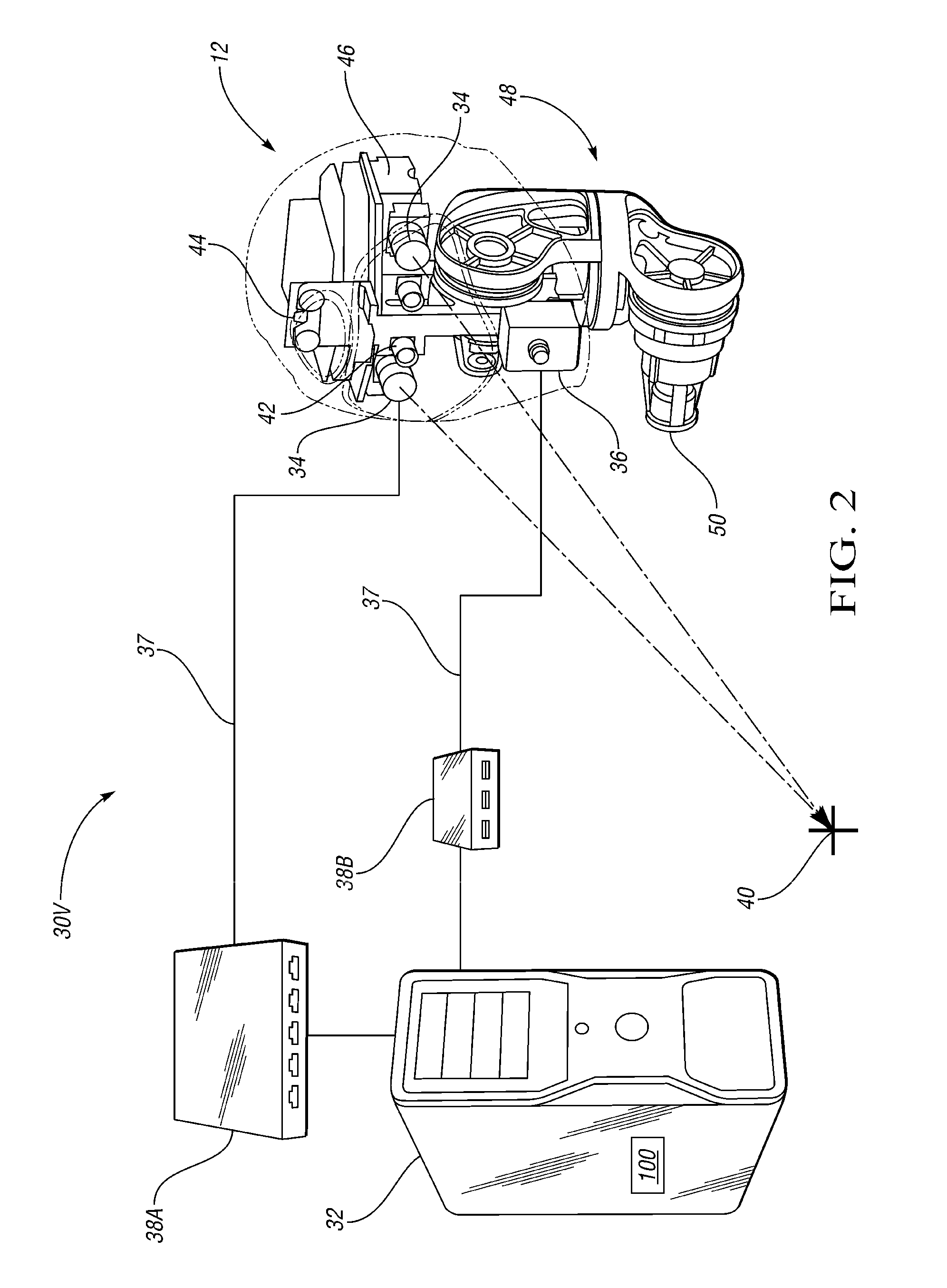Visual perception system and method for a humanoid robot
a humanoid robot and visual perception technology, applied in the field of humanoid robot control, can solve the problems of relative time consumption, added engineering, installation, and other expenses, and achieve the effect of optimizing the luminance dynamic range of sensors and preventing image feature data loss
- Summary
- Abstract
- Description
- Claims
- Application Information
AI Technical Summary
Benefits of technology
Problems solved by technology
Method used
Image
Examples
Embodiment Construction
[0021]With reference to the drawings, wherein like reference numbers refer to the same or similar components throughout the several views, FIG. 1 shows a robotic system that includes a dexterous humanoid robot 10, which in turn is controlled via a distributed control system or controller (C) 24. The robot 10 is adapted to perform one or more automated or autonomous tasks with multiple degrees of freedom (DOF). According to one embodiment, the robot 10 is configured with a plurality of independently and interdependently-moveable robotic joints, such as but not limited to a shoulder joint, the position of which is generally indicated by arrow A, an elbow joint (arrow B), a wrist joint (arrow C), a neck joint (arrow D), and a waist joint (arrow E), as well as the various finger joints (arrow F) positioned between the phalanges of each robotic finger 19.
[0022]Each robotic joint may have one or more DOF. For example, certain joints such as the shoulder joint (arrow A), elbow joint (arrow...
PUM
 Login to View More
Login to View More Abstract
Description
Claims
Application Information
 Login to View More
Login to View More - R&D
- Intellectual Property
- Life Sciences
- Materials
- Tech Scout
- Unparalleled Data Quality
- Higher Quality Content
- 60% Fewer Hallucinations
Browse by: Latest US Patents, China's latest patents, Technical Efficacy Thesaurus, Application Domain, Technology Topic, Popular Technical Reports.
© 2025 PatSnap. All rights reserved.Legal|Privacy policy|Modern Slavery Act Transparency Statement|Sitemap|About US| Contact US: help@patsnap.com



